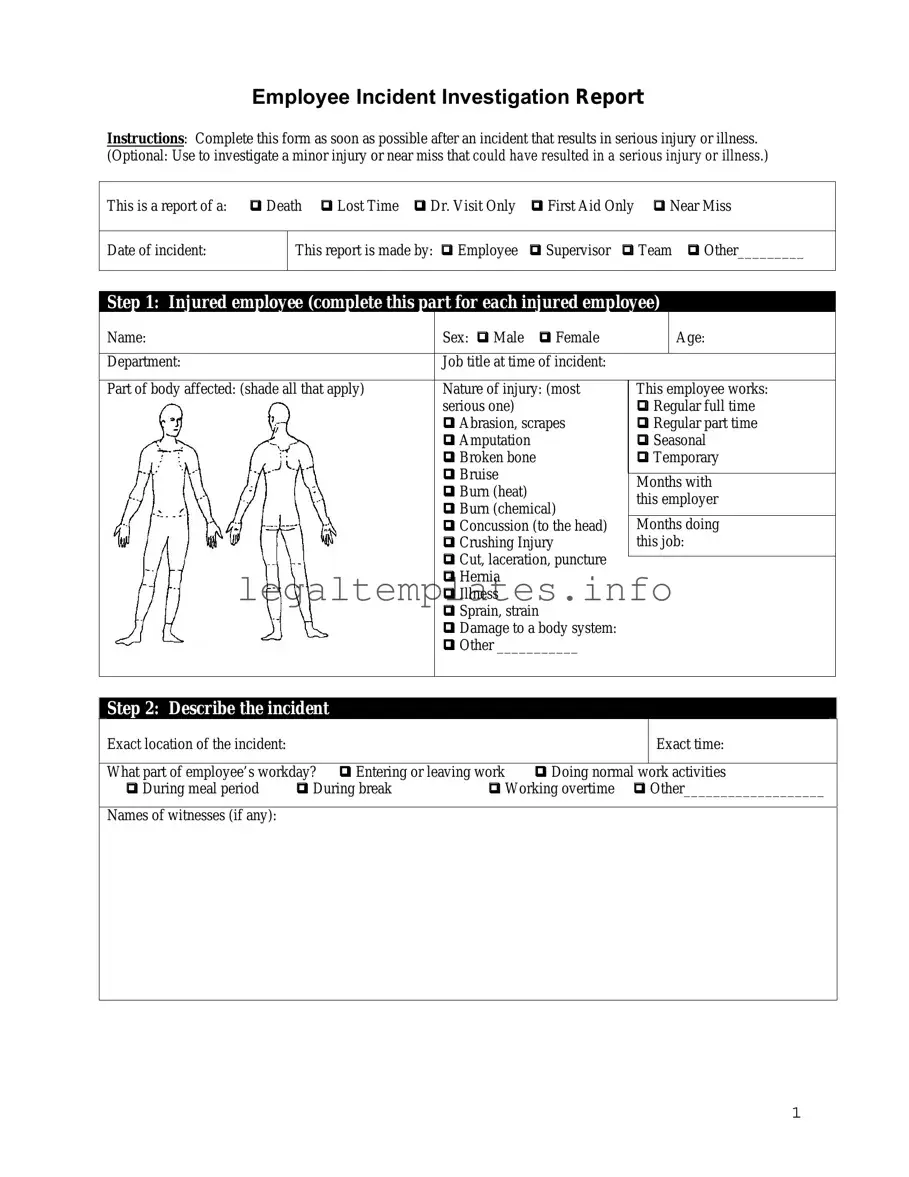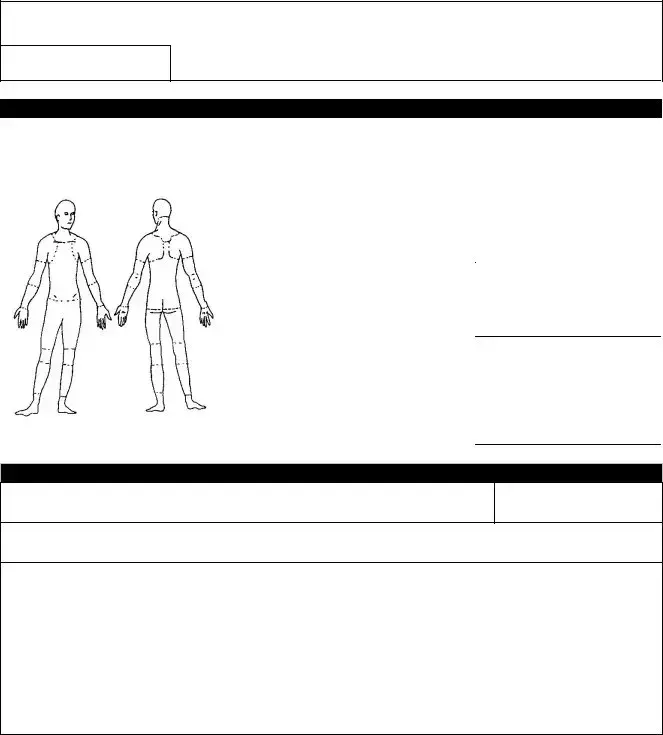Filling out an Employee Accident Report form is a crucial step in documenting workplace injuries, which can affect claims and compensations. Unfortunately, mistakes are common, sometimes complicating the process unnecessarily. One significant error is delaying the report. Many people underestimate their injuries or hope they will simply resolve themselves. This delay can question the legitimacy of the claim, making it harder to link the injury directly to the workplace incident.
Another widespread issue is providing incomplete information. When details are missing, it can create delays, as those processing the claims may need to seek out additional information or clarification. Precision about the incident, including the date, time, and place, as well as a detailed description of what happened, is paramount. Descriptions should be clear and concise, avoiding vague language.
A crucial mistake is failing to accurately describe the injury and how it occurred. This description is vital for understanding the nature and extent of the injury, as well as for establishing a cause-and-effect relationship between the injury and the workplace incident. The use of specific details rather than general terms can significantly affect the outcome of the compensation process.
Some employees make the error of not double-checking their report for errors or omissions before submitting it. This simple step can prevent misunderstandings or the need for revisions, which can delay the processing of the claim. Accuracy is crucial, not just for the facts of the incident, but also for personal information, which, if incorrect, can lead to issues with the claim.
Not including witness information is another mistake. Witnesses can corroborate the circumstances of the accident, adding credibility to the report. Failing to provide contact information for witnesses, or not indicating that there were any witnesses at all, is a missed opportunity to strengthen the claim.
A misstep often overlooked is failing to document the injury with photographs or videos. Visual evidence can be compelling and provide clear, indisputable proof of the injury's severity and its impact on the employee's ability to work.
An error that can significantly impact the outcome of a claim is not reporting every injury related to the accident. Sometimes, in the aftermath of an incident, the focus is on the most obvious or painful injury. However, it's important to report all injuries, as some may develop or become more apparent over time.
Using overly technical or medical terminology can also complicate the process. While it's important to be accurate, overly technical language can confuse those processing the claim if they're not familiar with medical or industry-specific terms. Striking a balance between precision and accessibility is key.
Finally, a critical mistake is not seeking medical attention. Some may feel it's unnecessary or prefer to wait and see if the injury heals on its own. However, a medical professional’s evaluation provides an official record of the injury and its severity, which is vital for substantiating the claim.



